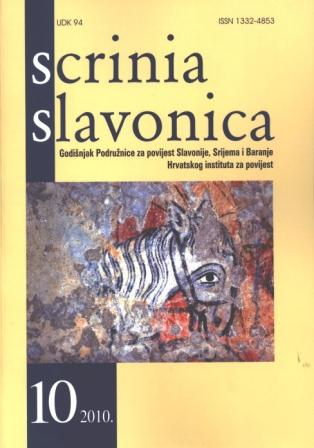Demografske i društveno-gospodarske posljedice epidemije kolere: primjer epidemije u Drenovcima 1873. godine
Demographic and socio-economic consequences of a cholera epidemic: example of the epidemic in Drenovci in 1873
Author(s): Irena IpšićSubject(s): History
Published by: Hrvatski institut za povijest
Keywords: Drenovci; cholera; contagious disease epidemic; general registers; demographic transition; mortality rate; 19th century
Summary/Abstract: In mid-1873 cholera struck Drenovci, a village in Eastern Slavonija that had at the time been a part of the Slavonian Military Border (Krajina). Local natural and geographic conditions, social and economic circumstances, and the social structure of the population were conducive to the spreading of the epidemic, while inadequate healthcare and lack of personal and home hygiene contributed to a high death rate. Cholera took 71 lives and increased the general mortality rate to an above-average 64.09‰, much higher than the birth rate, which greatly jeopardized the natural regeneration of the population. The specific mortality rate from cholera reached 26‰, equaling the general birth rate. Most victims were working-age inhabitants. The losses affected the further course of demographic processes, mainly the process of socalled demographic transition, which had already largely been under way in most Croatian regions or had been about to begin. The process was slowed down in Drenovci due to the mortality crisis and frequent epidemics. The population of Drenovci reacted immediately and sought to cushion the effects on future social and economic development. Defensive measures such as marriages at an early age, hurried remarriages, higher number of births, and a quicker tempo of births were the basic tools that families employed as protection against negative demographic trends caused by crisis situations such as the epidemic. Thus the inhabitants of Drenovci responded to the increased mortality rate by increasing their marriage rate and their birth rate in the period after the epidemic to restore the jeopardized family structure as soon as possible and to compensate for the loss of population during this epidemic.
Journal: Scrinia Slavonica
- Issue Year: 2010
- Issue No: 10
- Page Range: 527-545
- Page Count: 19
- Language: Croatian

